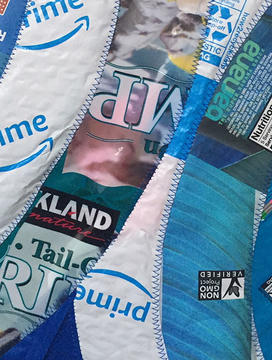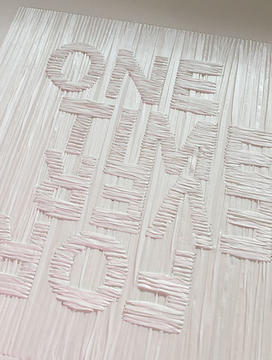Artist Kalliopi Monoyios ’00 Explores Complex Relationship With Plastics

One of Monoyios’ contributions to the exhibit was inspired by the tradition of quilting. She started quilting with plastic as an homage to the material’s durability and the prevalence of plastic “scraps” in today’s world. She also incorporates dental floss, plastic mesh bags, and contact lens packaging into her pieces for this exhibit.
Monoyios hopes the exhibit will raise questions and maybe even inspire action. “When you open your eyes and see how plastic makes our lives possible, it becomes harder to ask for an all-out ban. Instead I think we need to ask ourselves, ‘What are good uses of plastic?’ And then we need to demand better choices from the industry,” she says.

Monoyios says some of her most exciting professional experiences involve the intersection of science and art. For 11 years, she worked in Professor Neil Shubin’s lab in the Department of Organismal Biology and Anatomy at the University of Chicago, first as a fossil preparator and then as a scientific illustrator.
“I was the first person to illustrate Tiktaalik roseae [a fossil fish which was discovered in the Canadian Arctic in 2004],” she says. “That was thrilling. There were 375 million year old bones being unearthed at the desk next to me, and we were some of the first people to lay eyes on that.” Her illustration was published in Nature, with an article that was co-authored by Shubin.
She went on to illustrate numerous scientific articles and books including Shubin’s 2008 award-winning, Your Inner Fish: A Journey into the 3.5-Billion-Year-History of the Human Body.
“It really shaped my thinking for the next decade or so of work,” she says of the project. “It was the first time I was really thinking of how to distill these very complex scientific concepts ... in a way that is not intimidating or doesn’t scream out, ‘this is a science book.’”












No responses yet